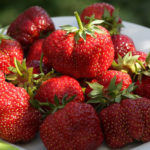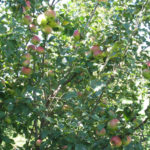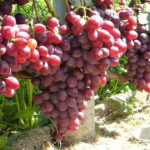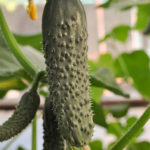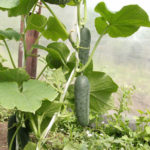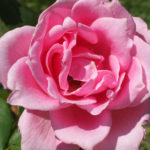Apple variety Mantet
Mantet is an apple variety of Canadian origin, obtained in 1928 at an experimental station in Morden (Manitoba) through natural pollination from seedlings of an old Russian variety Grushovka Moscow... Fruit ripening occurs in the summer. Mantet is included in the State Register for the Middle Volga and Central regions. Despite some similarities with Moscow's Grushovka, the fruits are slightly larger in size and better taste.
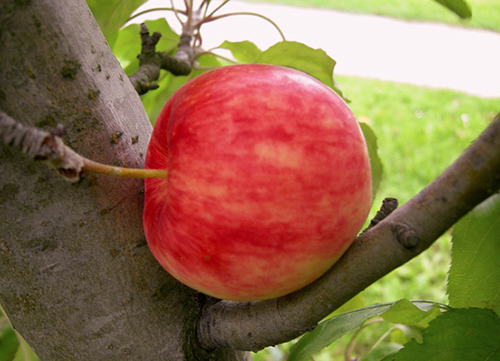
Trees with a rather sparse oval crown and powerful skeletal branches, directed upwards, grow to medium size. Fruiting occurs most often on the ringlets.
Shoots are brown, geniculate, pubescent, with small gray lenticels. The leaves are leathery, green, shiny, rather large, resembling an elongated ellipse in shape, the tips are long, elongated, directed upwards, wedge-shaped or pointed at the base, not pubescent, there is practically no curvature along the central vein. The leaf blades are even, with a smooth surface, the edges are slightly wavy, serrate, slightly raised. Petioles are thick, long, with a deviation from the shoots, rich anthocyanin color. Stipules subulate, medium-sized. The leaf buds are convex, conical, pubescent, of medium size. Annuals have a straight, uniformly thick stem and rather large lentils; pubescence is insignificant, vigor is average.
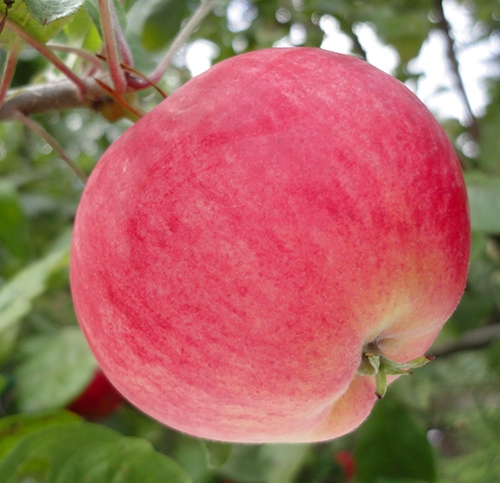
The flowers of the Mantet apple tree are quite large, saucer-shaped, the buds are of a delicate white-pink shade with a purple tint, the petals are paler, light pink, oblong in shape, adjacent, the pistils are short, the stigmas of the pistils are located below the anthers.
The fruits of this variety are small or medium-sized, the weight of one apple does not exceed 180 grams. The shape of the fruit is rounded-oblong, conical, in the upper part of the apples there is a slight ribbing. The main color of the fruits is greenish-yellow at the time of removal or yellowish after a short storage, the integumentary color is a bright red speckled-striped blush on an orange-red background. The peel on the fruit is thin, tender, without roughness. The funnel is medium-sized, narrow in shape. The length and thickness of the stalk can be different: medium and thick or long and thin, with a thickening at the end, depending on the position of the apple. The saucer is small, folded, narrow in shape. The calyx can be closed or half-open, with rather large, pointed-conical sepals. The seed chambers are rather large, open or half-open into the axial cavity. Seeds are dark brown, small, triangular in shape, with a slight bluntness at the tip. The sub-cup tube has a conical shape, does not fully fit into a medium-sized heart.

To taste, Mantet apples are quite juicy, sweet, sourness is practically not felt, with excellent dessert qualities. The pulp is fragrant, tender, white. In terms of chemical composition, apples contain: sugars (10.4%), titratable acid (0.8%), pectin substances (12.4%), ascorbic acid (11.2 mg / 100 g), P-active substances ( 371 mg / 100 g).
Under the conditions of Orel, the fruits ripen from late July to late August, depending on the seasonal conditions of the year.
The obvious advantages of the Mantet apple are the excellent taste of the fruit and their early ripening.
This variety is distinguished by its early maturity. Young apple trees have consistently high yields, but already mature trees often give an unstable crop, alternating over the years. With a plentiful harvest, the fruits are smaller.
Among the main disadvantages of this variety are susceptibility to scab (leaves and fruits are especially strongly affected in wet years) and an extended ripening period. In addition, trees have only average winter hardiness.
Harvesting the Mantet apple tree should not be delayed, since the fruits of this variety are characterized by very rapid overripening. The commodity indicators of fruits are low, the storage period of apples after harvesting is very short and does not exceed 10 - 15 days.
